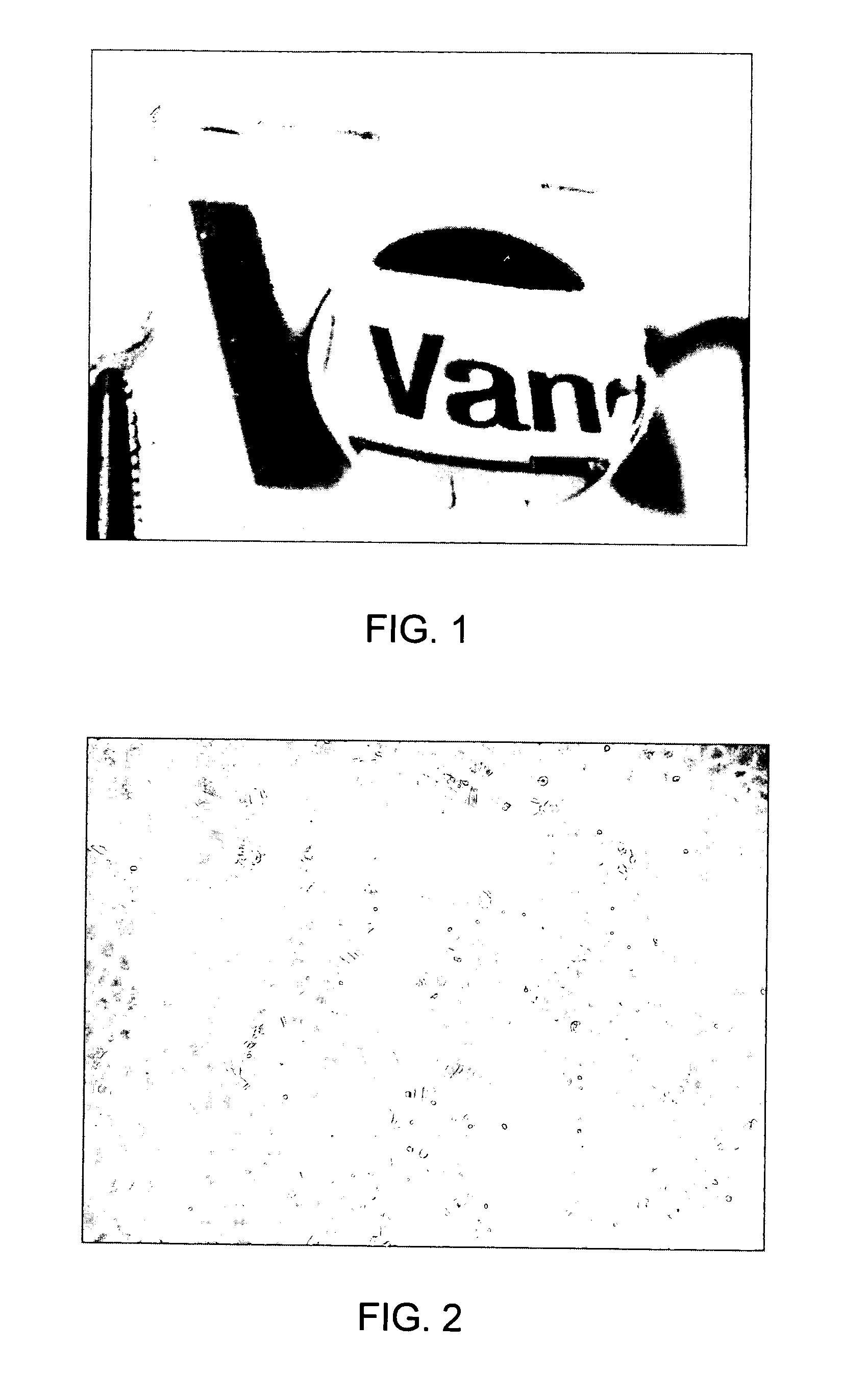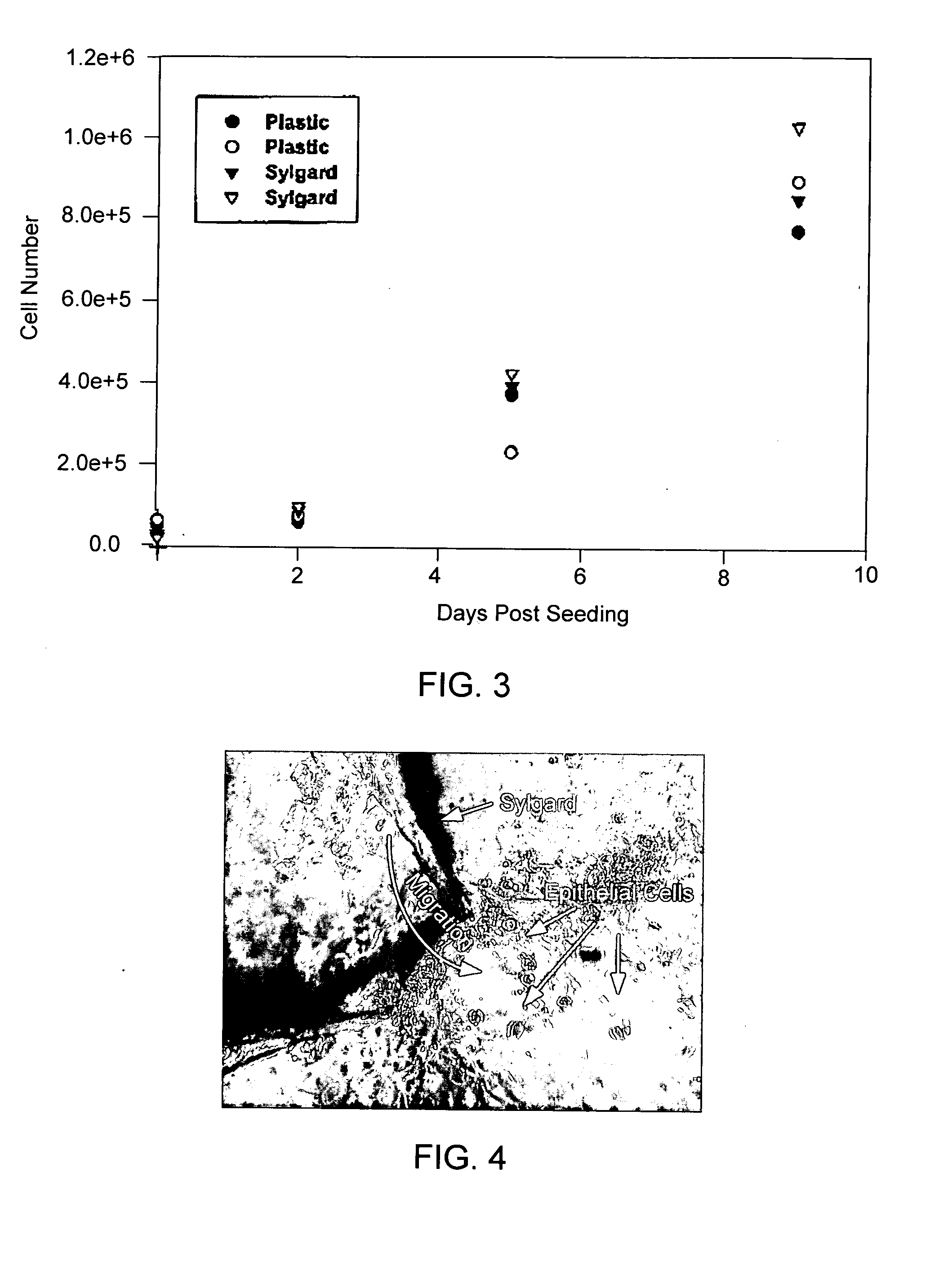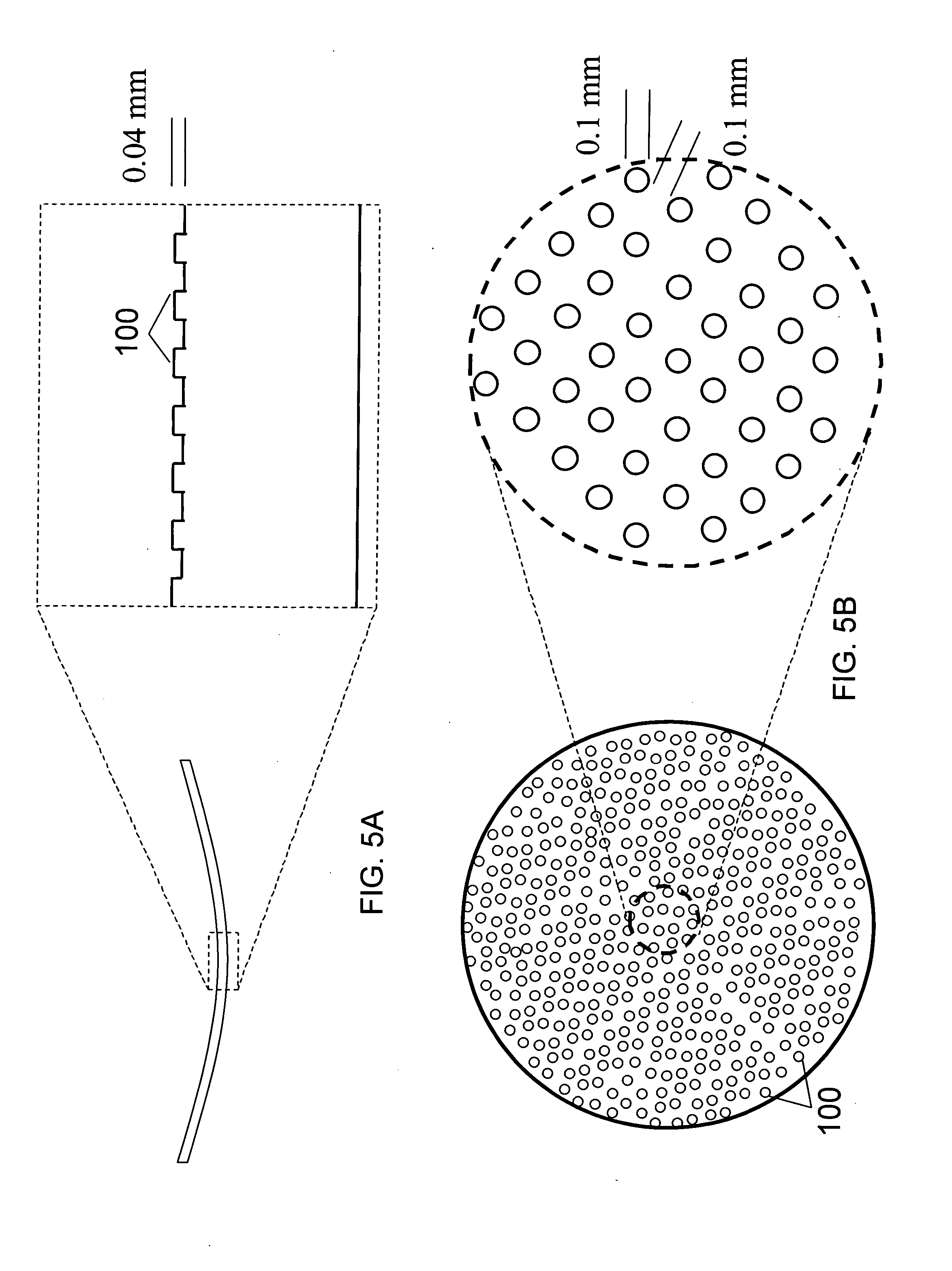Use of contact lens for corneal cell transplant
- Summary
- Abstract
- Description
- Claims
- Application Information
AI Technical Summary
Problems solved by technology
Method used
Image
Examples
example 1
Lens Fabrication
[0114]FIG. 1 shows an example of a concave molded lens fabricated from Sylgard 184 (poly (dimethyl siloxane)) (Dow Corning). The lens shown is approximately 2 cm in diameter and less than 1 mm thick and was molded using a standard drop slide following the manufacturer's instruction for the use of this material. A negative of the drop slide indentation was made and the second positive lens made by pouring Sylgard into the first negative mold and removing the material from the negative lens mold before the material had completely polymerized. The concave nature is evident from the distorted text image after the lens was placed onto newsprint.
example 2
Lens Material Supports the Growth of Epithelial Cells
[0115] The inventors used a human corneal epithelial cell line immortalized with SV40 to test the cell growth and transfer characteristics. FIG. 2 shows an example of cultured human epithelial cells grown on the inside curvature an untreated surface of Sylgard 184. In these experiments, the molded material was autoclaved and placed into a 100 mm Petri dish with its concave side up. The mold was filled with cells plus media. The media was Gibco's defined keratinocyte media without serum supplementation. Approximately 15,000 cells (or approximately 5,000 cells per cm2) were added to the inside of the mold. Media was changed twice weekly. Cells were cultured for 7-10 days and then photographed. As shown in FIG. 2, the cells appeared confluent but patchy in some areas.
[0116] As a further test of the growth characteristics, the inventors compared the growth of Sylgard 184 with standard tissue culture plastic. In two six-well plates, ...
example 3
Cells Grown on Sylgard Migrate from Sylgard onto Tissue Culture Plastic
[0117] In these experiments, the inventors sought to demonstrate that epithelial cells will grow on Sylgard 184 but retain their ability to migrate onto another surface. This will be important in seeking to promote the transfer of cells from the extracorpeal device back onto the corneal surface. In these experiments, Sylgard 184 with epithelial cells grown on their surface were placed into a tissue culture flask cell-side down. Within 2 to 3 days, migration of the cells from the Sylgard onto the plastic was evident. FIG. 4.
PUM
| Property | Measurement | Unit |
|---|---|---|
| Adhesivity | aaaaa | aaaaa |
| Permeability | aaaaa | aaaaa |
| Gas permeability | aaaaa | aaaaa |
Abstract
Description
Claims
Application Information
 Login to View More
Login to View More - R&D
- Intellectual Property
- Life Sciences
- Materials
- Tech Scout
- Unparalleled Data Quality
- Higher Quality Content
- 60% Fewer Hallucinations
Browse by: Latest US Patents, China's latest patents, Technical Efficacy Thesaurus, Application Domain, Technology Topic, Popular Technical Reports.
© 2025 PatSnap. All rights reserved.Legal|Privacy policy|Modern Slavery Act Transparency Statement|Sitemap|About US| Contact US: help@patsnap.com



